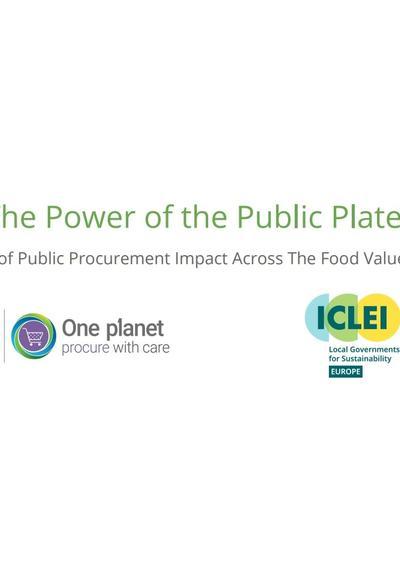Power of the Public Plate Report: Analysis of Public Procurement Impact Across The Food Value Chain
While the majority of natural resource use and environmental impacts is taking place at the primary production stage, primary producers have a limited ability to shape food systems and change their production practices. Comparatively, while the actors along the middle stage value chain do not use the most resources themselves, they have a huge impact on the activities at either end. This stage of the value chain, which includes public authorities purchasing food items or contracting catering services, is also structurally powerful and has a disproportionate influence across both primary production and final consumption and to a large degree shapes both what food farmers produce and sell and what food consumers buy and eat.
By carefully integrating the impact of the food they purchase into procurement decisions, public authorities such as schools, universities, public administrations at the national and local level or hospitals, can significantly contribute to supporting environmental improvements in the sector whilst providing a nutritious diet to beneficiaries and supporting targeted producers.
This analysis has been done by ICLEI - Local Governments for Sustainability as part of ‘Procurement across the value chain’ - project under the One Planet Network. The objective of the analysis is to better understand how procurement can be used as a tool to support more sustainable food systems.
The review resulted in the identification and curation of 7 impact typologies across UN World regions:
● Sourcing local through fresh and seasonal food items
● Smallholder-friendly procurement
● Supporting a healthy and nutritious diet
● Reducing waste from food and packaging
● Fair employment conditions
● Sourcing organic produce
● Increase of plant-rich food and supporting animal welfare
Whilst the analysis gives details covering all UN World Regions Africa, Asia and the Pacific, Europe and Central Asia, Middle East, North America and South America, it is generalizing and further in-depth analysis per world region or even country-level is warranted. With procurement, there is no 'one-size-fits-all' solution.

Publication date:
